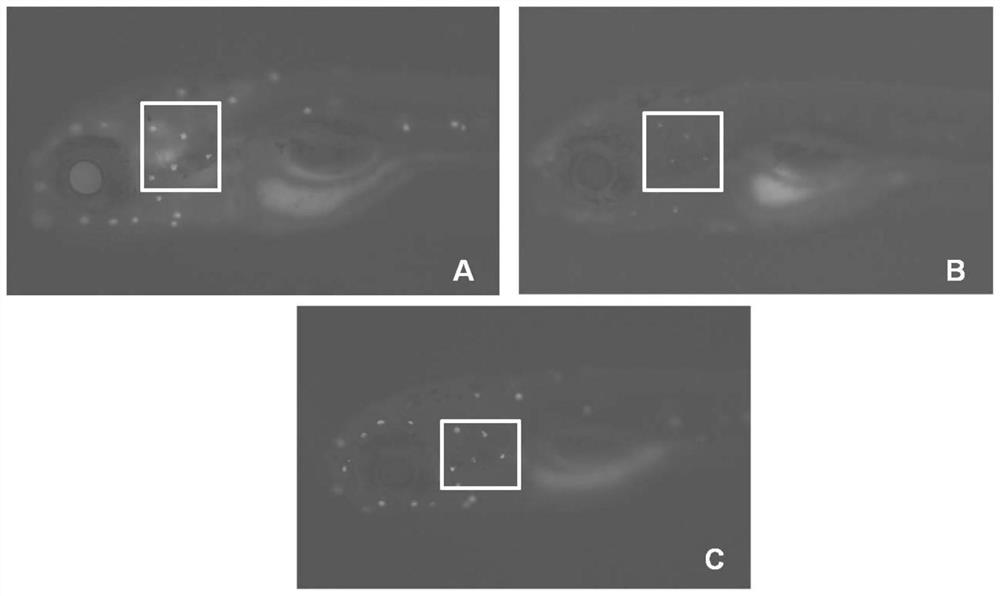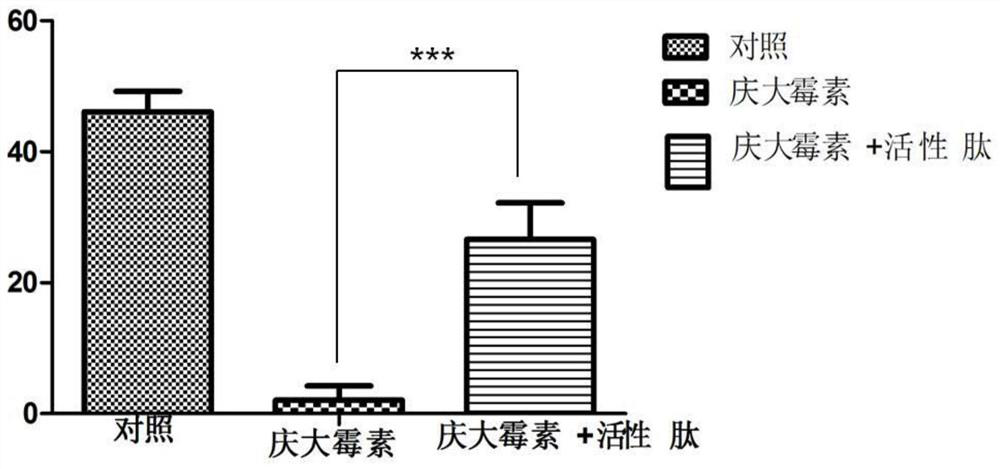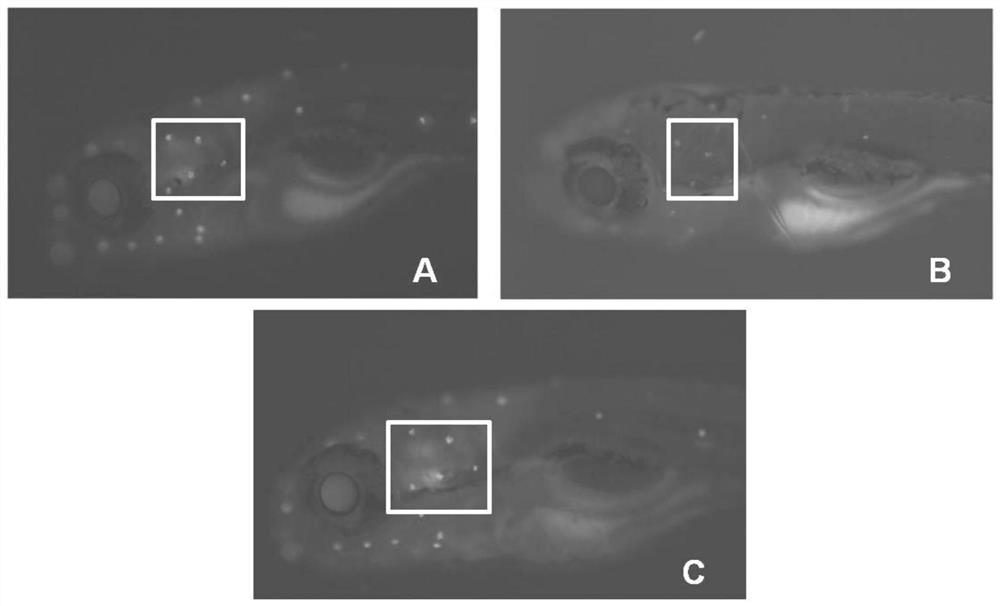Application of an active octapeptide in protecting sensory hair cells
A sensory hair cell, active technology, applied in the application field of active octapeptide in the protection of sensory hair cells, to achieve the effect of improving damage, broad market prospects, and small side effects
- Summary
- Abstract
- Description
- Claims
- Application Information
AI Technical Summary
Problems solved by technology
Method used
Image
Examples
Embodiment 1
[0038] Example 1: Protective effect of 60 μg / ml active octapeptide sample on zebrafish sensory hair cells
[0039] experimental method
[0040] 1. Zebrafish sample pretreatment:
[0041] Use healthy and sexually mature AB zebrafish, put them into a mating tank at a ratio of 1:1 for males and females, place a partition in the middle, and place them in a dark environment. Remove the partition before turning on the light the next day, and light stimulate it to ovulate. The adult fish are fished out half an hour after ovulation, and the ovulation time is controlled within half an hour to reduce the difference in development time between embryos. Collect the fertilized eggs and rinse them three times with new zebrafish embryo culture water to disinfect and clean the fertilized eggs; then move the fertilized eggs into clean zebrafish embryo culture water, and add 0.2ppm methylene blue to the culture water, 28 ℃, 14h light / 10h dark cycle, light-controlled culture, about 1 / 3 of the ...
Embodiment 2
[0050]Example 2: Protective effect of 80 μg / ml active octapeptide sample on zebrafish sensory hair cells
[0051] The pretreatment of zebrafish samples, the labeling of zebrafish sensory hair cells and the statistics of the number of sensory hair cells are the same as in Example 1.
[0052] Active octapeptide treatment:
[0053] The active octapeptide whose amino acid sequence is shown as SEQ ID NO.1 is synthesized by artificial synthesis, and the octapeptide is synthesized by the Fmoc solid-phase synthesis method described by Liu Zhennan [4] synthesis.
[0054] Set up a control group, a gentamicin modeling group, and an active octapeptide treatment group. Remove the culture water in the 6-well plate, add 6ml culture water solution to the control group; add gentamicin with a final concentration of 150M in the 6ml culture water of the gentamicin modeling group; 150 M of gentamicin and 80 μg / ml of active octapeptide. The zebrafish embryos of the above groups were placed in a...
Embodiment 3
[0056] Example 3: Protective effect of 90 μg / ml active octapeptide sample on zebrafish sensory hair cells
[0057] The pretreatment of zebrafish samples, the labeling of zebrafish sensory hair cells and the statistics of the number of sensory hair cells are the same as in Example 1.
[0058] Active octapeptide treatment:
[0059] The active octapeptide whose amino acid sequence is shown as SEQ ID NO.1 is synthesized by artificial synthesis, and the octapeptide is synthesized by the Fmoc solid-phase synthesis method described by Liu Zhennan [4] synthesis.
[0060] Set up a control group, a gentamicin modeling group, and an active octapeptide treatment group. Remove the culture water in the 6-well plate, add 6ml culture water solution to the control group; add gentamicin with a final concentration of 150M to the 6ml culture water of the gentamicin modeling group; add a final concentration of 150M to the 6ml culture water of the active octapeptide treatment group 150M gentamic...
PUM
 Login to View More
Login to View More Abstract
Description
Claims
Application Information
 Login to View More
Login to View More - R&D
- Intellectual Property
- Life Sciences
- Materials
- Tech Scout
- Unparalleled Data Quality
- Higher Quality Content
- 60% Fewer Hallucinations
Browse by: Latest US Patents, China's latest patents, Technical Efficacy Thesaurus, Application Domain, Technology Topic, Popular Technical Reports.
© 2025 PatSnap. All rights reserved.Legal|Privacy policy|Modern Slavery Act Transparency Statement|Sitemap|About US| Contact US: help@patsnap.com



